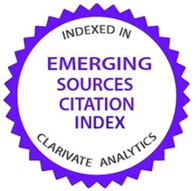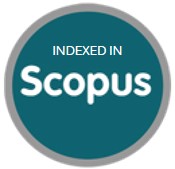Una estrategia para lograr: el Reino Unido busca innovar en competitividad, 1998-2005
DOI:
https://doi.org/10.21830/19006586.161Palabras clave:
innovación, I D, competitividad, estrategia, Reino UnidoResumen
Este artículo analiza el caso de una estrategia de innovación genuina en términos de competitividad, tal como fue adoptada por el Reino Unido durante los años comprendidos entre 1998 y 2005. La evidencia se encontró mediante la sistematización de antecedentes, medidas, escenarios, implementación y progreso de tal estrategia, según la cual se considera que la única fuente sólida de conocimientos es la actividad de Investigación y Desarrollo (I+D). Esto va a ser demostrado con el seguimiento de estrategias de innovación genuina, durante el sentido de los esfuerzos del Reino Unido por impulsar la actividad de I+D, en el período analizado, para así determinar las brechas reales entre el Reino Unido y sus principales competidores. En una economía global como la de hoy, la competitividad busca desarrollar estrategias complejas y revolucionarias. Las economías basadas en el conocimiento están tratando de mantener su competitividad dentro y fuera de sus fronteras. A finales del siglo veinte, en efecto, ser competente y com-petitivo es la mejor estrategia para crear y mantener el capital intelectual de las organizaciones.Descargas
Referencias bibliográficas
Atkins, R. & Parker, G. (March 17, 2005), A Mountain to Climb: Brussels is Trying to Improve the Results from Innovation. Britain Financial Times, p. 6.
Barwise, P. & Meehan, S. (2004). Six Rules for Become Simple Better. Business Strategy Review, 15(3), 24-31.
https://doi.org/10.1111/j.0955-6419.2004.00323.x
Bessant, J., Birkinshaw, J. & Delbridge, R. (2004) Innovation as Unusual. Business Strategy Review, 15(3), 32-35.
https://doi.org/10.1111/j.0955-6419.2004.00324.x
Cookson, C. (March 8, 2005). Universities Get Largest Share of Science Cash Rise. Britain Financial Times, p. 5.
Cox, H. & Frenz, M. (2002). Innovation and Performance in British-based Manufacturing Industries: Shaping the Policy Agenda. The Business Economist, 33(2), 24-33.
Department of Trade and Industry (2003). Competing in the Global Economy: The Innovation Challenge. Innovation Report. UK: HMSO.
Department of Trade and Industry (2004). Creating Wealth from Knowledge. The DTI Five Year Programme. UK.
Department of Trade and Industry (April, 2004). Creating Competitive Advantage through Innovation. Succeedi ng Through Innovati on. A Guid e for Corporates and Busi ness Organizati ons. UK: DTI.
Department of Trade and Indust ry (April, 2004). Succeeding Through Innovati on: Overview. The Technology Programme. UK: HMSO.
Department of Trade and Indust ry (February, 2005). Business Plan 2005-2008. Our Route to Prosperity for All. UK: HM SO
Department of Trade and Indust ry (February, 2005). DTI Business Plan 2003-2006. Mapping a Route to Prosperity for All. UK: HMSO.
Department of Trade and Industry (February, 2004). Knowledge Transfer Partnerships. Partnering with a University, College or Research Organization to Bring Knowledge and Expertise into Your Business. A DTI Product Supp orti ng Innovati on. UK: HMSO.
Department of Trade and Indust ry (May, 2004). Global watch Service: Providing Access to Global Innovation. UK: Pera Innovation.
Department of Trade and Industry (November, 2004). Global Watch Secondments : Acquiring Technology and Knowledge from Overseas. UK: DTI.
Department of Trade and Indust ry (Sept ember, 2003). The Strategy: Analysis . UK: HM SO.
Dodgson, M. (2000). The Management of Technological Innovati on. An Internati onal and Strategic App roach. Oxford University Press.
Economic Focus (2004). Counting Heads. The Economist, 372(8390), p. 70.
European Commission (2000). Innovation Policy in a Knowledge-based Economy. Italy: Enterprise Directorate-General.
Franklin, C. (2003). Why Innovation Fails. USA: Spiro Press.
Gapper, J. (January 20, 2005). China Should Find a Smarter Way to Copy. Britain Financial Times, p. 8.
Giles, C. & Cookson, C. (October 26, 2004). Boost for Science as Brown Eyes Plaudits. Britain Financial Times, p. 3.
Graduate Employment Prospects (2005). Engineering a Shortage. The Economist, 374(8408), p. 30.
Guthrie, J. (Octuber 26, 2004). A Patent System that Can Be the Mother of All Inventions. Britain Financial Times, p. 13.
Hall, W. (February 22, 2005). Initiative to Boost Business and Research Links. Britain Financial Times, p. 4.
Halpin, T. (March 10, 2005). Universities fail to meet students' demand for more places. Britain The Times, p. 4.
HM Treasury (2000). A More Competitive Environment for Businesses. HM Treasury. Retrieved from http://www.hmtreasury.gov.uk/budget/budget_2000/press_notices/bud_bud00_pressrevcust2.dfm.
HM Treasury (2003). Budget Report 2003: Building a Britain of Economic Strength and Social Justice. HM Treasury. Retrieved from http://www.hmtreasury.gov.uk/budget/bud_bud03/budget_report/bud_bud03_repindex.cfm
HM Treasury (2004). Budget 2004: Overview. HM Treasury. Retrieved from http://www.hmtreasury.gov.uk/media/91D/93/ACF12D7.pdf
HM Treasury (2005). Budget 2004: Overview. HM Treasury. Retrieved from http://www.budget2005.treasury.gov.uk/page_04.html
IMD International (1997). IMD World Competitiveness Year Book 1997. Switzerland: IMD.
IMD International (1998). IMD World Competitiveness Year Book 1998. Switzerland: IMD.
IMD International (2001). IMD World Competitiveness Year Book 2001. Switzerland: IMD.
IMD International (2002). IMD World Competitiveness Year Book 2002. Switzerland: IMD.
IMD International (2003). IMD World Competitiveness Year Book 2003. Switzerland: IMD.
IMD International (2004). IMD World Competitiveness Year Book 2004. Switzerland: IMD.
Intellectual Property in India (2005). Patently Unclear. The Economist, 374(8410), p 73.
Khalil, T. (2000). Management of Technology. The Key to Competitiveness and Wealth Creation. USA: McGraw-Hill International Editions.
Love, J. & Roper, S. (2004). The Organization of Innovation: Collaboration, Cooperation and Multifunctional Groups in UK and German Manufacturing. Cambridge Journal of Economics, 28(3), 379-395.
https://doi.org/10.1093/cje/28.3.379
Moules, J. (November 30, 2004). Business Ahead of US in Its Links with Academia. Britain Financial Times, p. 3.
OECD (2000). Research and Development Expenditure in Industry 1987-2000. Paris: OECD.
https://doi.org/10.1787/rd_exp-2000-en-fr
OECD (2005). Factbook: Economic, Environmental and Social Statistics. Paris: OECD Publishing.
https://doi.org/10.1787/factbook-2005-en
OECD (July, 2004). OECD in Figures: Statistics on the Member Countries. Paris: OECD Observer.
OECD Economic Surveys (March, 2004). United Kingdom.
OECD (2005). CDE Corporate Data Environment, Organisation for Economic Cooperation and Development. Retrieved from www.oecd.org/document/10/0%2C2340%2Cen_2649_34409_1901066_1_1_1_1%200.html
OST (2004), Personal Engaged on R&D in the UK. Office of Science and Technology, Retrieved from http://www.ost.gov.uk/setstats/8/t8_3.htm
Patents (2004). Still Pending. The Economist, 371(8376), p. 72.
Patents (2005). Smart Assets. The Economist, 374(8414), p. 68.
Pesola, M. (March 17, 2005). Attempt to Boost Innovation Fails to Hit the Target. Britain Financial Times, p. 6.
Porter, M. & Ketels CHM (2003). UK Competitiveness: Moving to the Next Stage. DTI Economics Paper 3. Report prepared for The Economic and Social Research Council. UK: HMSO.
Porter, M., Sachs, J., Cornelius, P., McArthur, J. & Schwab, K. (2001). The Global Competitiveness Report 2001-2002. New York-Oxford: Oxford University Press.
Porter, M., Sachs, J., Warner, A., Cornelius, P., Levinson, M. & Schwab, K. (2000). The Global Competitiveness Report 2000. New York-Oxford: Oxford University Press.
Porter, M., Sachs, J. & Schwab, K. (1999). The Global Competitiveness Report 1999. UK: HIID.
Porter, M., Schwab, K., Sala-I-Martin, X. & Lopez, A. (2003). The Global Competitiveness Report 2003-2004. New York-Oxford: Oxford University Press.
Porter, M., Schwab, K., Sala-I-Martin, X. & Lopez, A. (2004). The Global Competitiveness Report 2004-2005. London: Palgrave Macmillan.
Porter, M. E. (1998). The Competitive Advantage of Nations. With a New Introduction By the Author. London: Macmillan Business.
https://doi.org/10.1007/978-1-349-14865-3
RCS Conseil (1998). The Single Market Review. Europe. Intangible Investments. Sub series V: Impact on Competition and Scale effects, 2. Luxembourg: Kogan Page Earthscan.
PMCid:PMC21422
Shavinina, L. V. (2003). The International Handbook of Innovation. UK: Pergamon.
https://doi.org/10.1016/B978-008044198-6/50028-0
https://doi.org/10.1016/B978-008044198-6/50001-2
Sherman, E. (November 12, 2004). How to Protect your Property. Britain Financial Times, p. 12.
Styles, C. & Goddard, J. (2004). Spinning the Wheel of Strategic Innovation. Business Strategy Review, 15(2), 63-72.
https://doi.org/10.1111/j.0955-6419.2004.00317.x
Szwejczewski, M., Wheatley, M. & Goffin, K. (April, 2002). Process Innovation. Lessons from UK Manufacturing. UK: DTI.
Szwejczewski, M., Wheatley, M. & Goffin, K. (June, 2001). Process Innovation in UK Manufacturing: Best Practice Makes Perfect. UK: DTI, HMSO.
The Economic Outlook (2005). Not Feeling so Good. The Economist, 375(8421), p. 28.
The Economist Poll. (2005). Economic and Final Indicators. The Economist, 374(8414), p. 108.
The Economist Poll. (2005). Economic and Final Indicators. The Economist, 375(8423), p. 112.
The Office for National Statistics (2005). Annual Abstract of Statistics. 2005. London: Palgrave Macmillan.
The Office for National Statistics (2005). UK 2005: "The Official Yearbook of The United Kingdom of Great Britain and Northern Ireland". London: National Statistics.
The World Bank (2004). World Development Indicators. USA.
The World in 2005 (2005). Globalcorp 2005. The Economist, London.
Tidd, J., Bessant, J. & Pavitt, K. (1998). Managing Innovation. Integrating Technological, Market and Organizational Change. England: John Wiley & Sons.
PMCid:PMC147466
Tyrrel, P. (October 5, 2005). The Cost of Confidentiality. Britain Financial Times, p. 12.
U.S Census Bureau (2003). Statistical Abstract of the United States: 2003. The National Data Book. 123rd edition. USA: Hoover's Business Press.
U.S Census Bureau (2004). Statistical Abstract of the United States: 2004-2005. The National Data Book. 124th edition. USA: US Government Printing Office.
United Nations (2004). Statistical Yearbook. Forty-Eight Issue. New York.
USPTO (2003). Historic Patents By Country, State, and Year – Utility Patents. United States Patent and Trademark Office. Retrieved from www.uspto.gov/web/offices/ac/ido/oeip/taf/cst_utlh.htm
Visas and Science (2005). American Express? The Economist, 374(8414), p. 86.
Wolf, M. (December 3, 2004). Labour Sets out Its Election Stall. Britain Financial Times, p. 11.
World Bank (2005). Data Query. Retrieved from http://devdata.worldbank.org/data-querry/
Descargas
Publicado
Cómo citar
Número
Sección
| Estadísticas de artículo | |
|---|---|
| Vistas de resúmenes | |
| Vistas de PDF | |
| Descargas de PDF | |
| Vistas de HTML | |
| Otras vistas | |

























